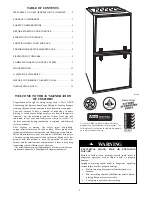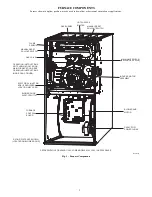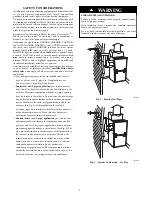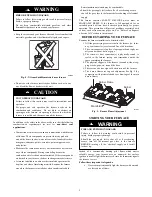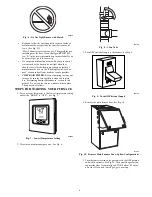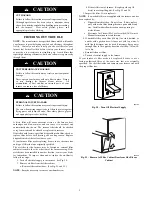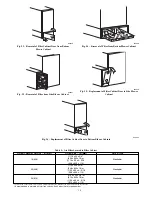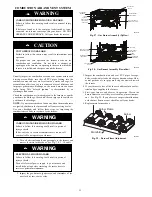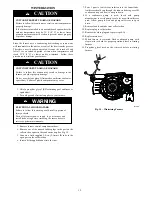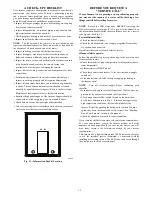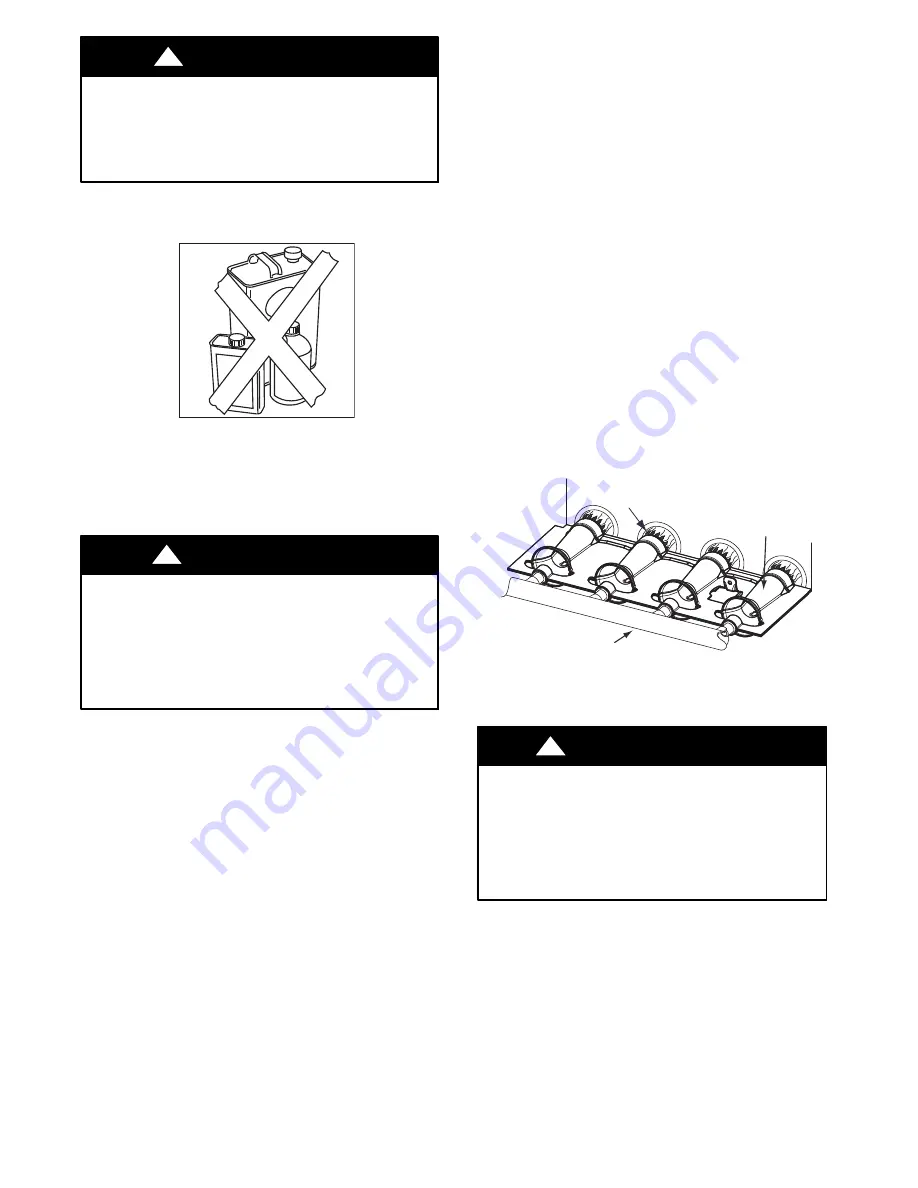
5
FIRE OR EXPLOSION HAZARD
Failure to follow this warning could result in personal injury,
death, or property damage.
Do not keep combustible materials, gasoline, and other
flammable liquids or vapors around your furnace.
!
WARNING
S
Keep the area around your furnace clear and free of combustible
materials, gasoline, and other
flammable
liquids and vapors.
A92182
Fig. 4 - NO combustible materials near furnace
S
Do not cover the furnace, store trash or debris near it, or in any
way block the
fl
ow of fresh air to the unit.
UNIT OPERATION HAZARD
Failure to follow this caution may result in intermittent unit
operation.
For proper and safe operation the furnace needs air for
combustion and ventilation. Do not block or obstruct air
openings on the furnace, air opening to the area in which the
furnace is installed, and the space around the furnace.
CAUTION
!
In addition to the safety rules above, make sure that the following
combustion- air requirements are met for
non- direct vent
applications
:
S
Combustion air must be clean and uncontaminated with chlorine
or fluorine. These compounds are present in many products
around the home, such as: water softener salts, laundry bleaches,
detergents, adhesives, paints, varnishes, paint strippers, waxes,
and plastics.
S
Make sure the combustion air for your furnace does not contain
any of these compounds. During remodeling be sure the
combustion air is fresh and uncontaminated. If these compounds
are burned in your furnace, the heat exchangers may deteriorate.
S
A furnace installed in an attic or other insulated space must be
kept free and clear of insulating material. Examine the furnace
area when the furnace is installed or when insulation is added.
Some insulation materials may be combustible.
S
Should the gas supply fail to shut off or if overheating occurs,
shut off the gas valve to the furnace before shutting off electrical
supply.
This furnace contains SAFETY DEVICES which must be
MANUALLY RESET. If the furnace is left unattended for an
extended period of time, have it checked periodically for proper
operation. This precaution will prevent problems associated with
no heat, such as frozen water pipes, etc. See “Before You Request
a Service Call” section in this manual.
BEFORE STARTING YOUR FURNACE
Examine the furnace installation to determine that:
1. All flue gas carrying areas external to the furnace (i.e. chim-
ney, vent connector) are clear and free of obstructions.
2. The vent connector is in place, slopes upward and is physic-
ally sound without holes or gaps.
3. The return- air duct connection(s) is physically sound, is
sealed to the furnace casing, and terminates outside the
space containing the furnace.
4. The physical support of the furnace is sound without sag-
ging cracks, gaps, etc. around the base.
5. There are no obvious signs of deterioration of the furnace.
6. The burner flames are in good adjustment, See Fig. 5 (by
comparison with pictorial sketches or drawings of the main
burner flame).
Burner Flame
Burner
Manifold
A11461
Fig. 5 - Burner Flame Adjustment
STARTING YOUR FURNACE
FIRE AND EXPLOSION HAZARD
Failure to follow this warning could result in personal
injury, death or property damage.
Should the gas supply fail to shut off or if overheating
occurs, turn off the manual gas valve to the furnace
BEFORE turning off the electrical supply and install
lockout tag.
!
WARNING
Instead of a continuously burning pilot flame which wastes
valuable energy, your furnace uses an automatic, hot surface
ignition system to light the burners each time the thermostat signals
the furnace to start.
Follow these important safeguards:
S
Never attempt to manually light the burners with a match
or other source of flame.


